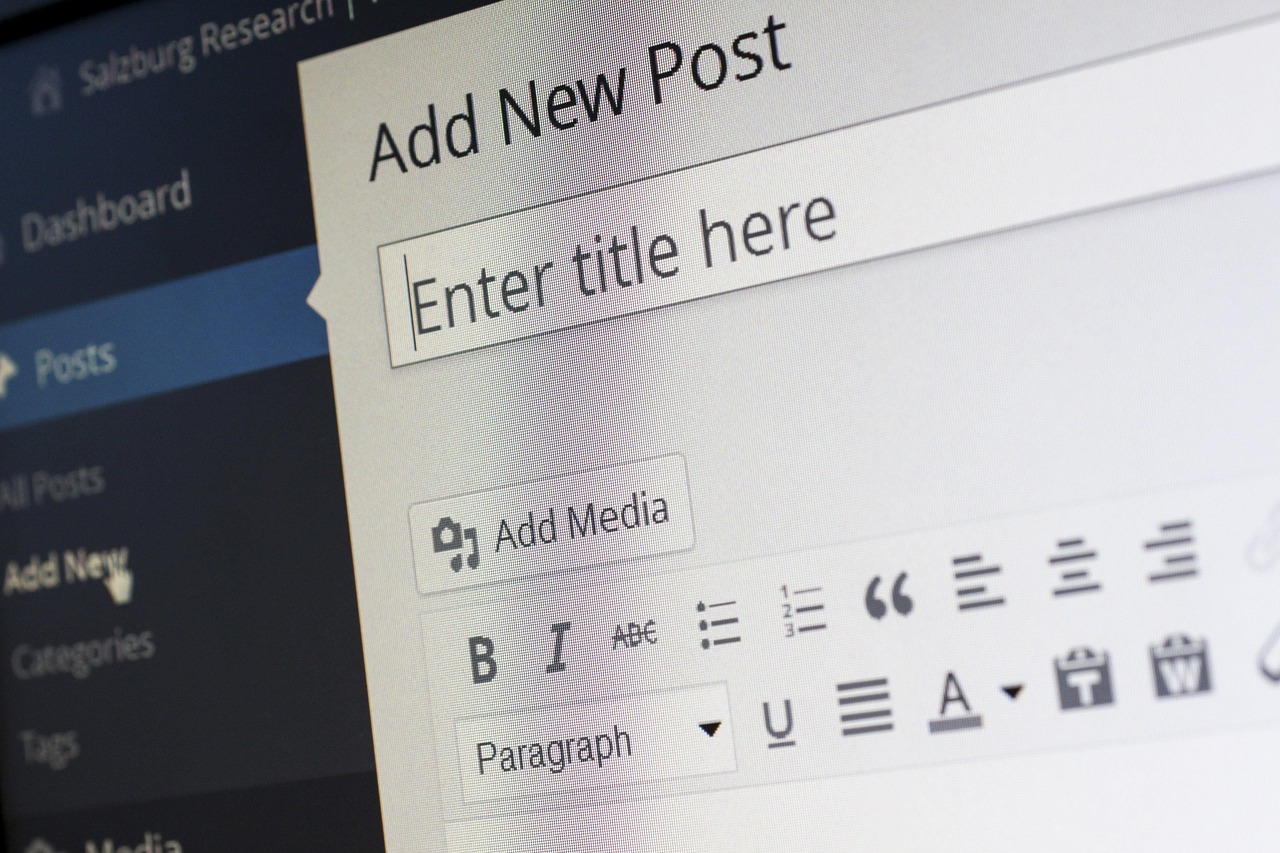
Hardening WordPress Security
Table of Contents: Hardening WordPress Security
- Introduction
- Keep Everything Updated
- Use Strong Login Credentials
- Limit Login Attempts
- Implement HTTPS
- Secure the wp-config.php File
- Change the Default Login URL
- Disable File Editing
- Regular Backups
- Install a Security Plugin
- Use a Web Application Firewall (WAF)
- Restrict Access
- Disable Directory Listing
- Monitor and Audit
- Secure Your Database
- Disable XML-RPC
- Monitor for Vulnerabilities
- Conclusion
1. Introduction
WordPress is one of the most popular content management systems (CMS) in the world, powering millions of websites ranging from personal blogs to large-scale enterprise platforms. However, its widespread use also makes it a prime target for hackers and malicious actors. Without proper security measures, WordPress sites can become vulnerable to attacks such as malware infections, brute force attacks, phishing scams, and data breaches.
2. Keep Everything Updated
Keeping your WordPress installation, plugins, and themes updated is one of the simplest yet most effective ways to secure your website. Developers frequently release updates to patch vulnerabilities, improve performance, and introduce new features. Neglecting updates can leave your site exposed to known security threats.
2.1 Update WordPress Core
The WordPress core is the backbone of your website. Ensuring it is always updated to the latest version helps protect against vulnerabilities that hackers might exploit. WordPress provides automatic updates for minor releases, but major updates may require manual intervention.
- Navigate to the Dashboard > Updates section in your WordPress admin area to check for available updates.
- Enable automatic updates for major versions by adding the following line to your wp-config.php file:define(‘WP_AUTO_UPDATE_CORE’, true);
2.2 Update Themes and Plugins
Outdated themes and plugins are common entry points for attackers. Regularly check for updates and remove unused or abandoned ones.
- Go to Dashboard > Updates to see all available updates for themes and plugins.
- Consider using a plugin like Easy Updates Manager to automate updates.
2.3 Use a Supported PHP Version
PHP is the underlying programming language for WordPress. Using an outdated version can leave your site vulnerable to security risks. Ensure your hosting provider supports the latest stable PHP version compatible with WordPress.
- Check your current PHP version under Tools > Site Health in the WordPress admin panel.
- Upgrade PHP through your hosting control panel or contact your hosting provider for assistance.
2.4 Backup Before Updating
Before performing updates, always create a backup of your site. This ensures you can restore your site to its previous state if anything goes wrong during the update process.
- Use backup plugins like UpdraftPlus or BackupBuddy to automate backups.
- Store backups in a secure offsite location, such as cloud storage.
By maintaining an updated WordPress environment, you significantly reduce the risk of security breaches and ensure optimal performance for your website.
3. Use Strong Login Credentials
Securing your WordPress site starts with the login credentials. Weak or predictable credentials are one of the most common ways attackers gain unauthorized access to websites. Here are the best practices to ensure your login credentials are robust:
Avoiding Common Usernames
Many WordPress sites use default usernames like “admin,” which are easy targets for attackers. To improve security:
- Avoid using “admin,” “administrator,” or similar generic usernames.
- Choose a unique username that is hard to guess, combining letters, numbers, and special characters if possible.
- Consider creating separate accounts for administrators and contributors, each with appropriate privileges.
Creating Strong Passwords
A strong password is your first line of defense against unauthorized access. Follow these tips to create effective passwords:
- Use at least 12 characters, including uppercase and lowercase letters, numbers, and special symbols.
- Avoid common words, phrases, or sequences like “password123” or “123456.”
- Consider using a reputable password manager to generate and store complex passwords securely.
- Update passwords periodically to minimize risk.
Enabling Two-Factor Authentication (2FA)
Two-Factor Authentication adds an additional layer of security by requiring a second form of verification in addition to the password. Here’s how to enable it:
- Install a WordPress plugin such as Google Authenticator, Authy, or WP 2FA.
- Configure the plugin to link your site with an authentication app or to send verification codes via SMS or email.
- Encourage all users with access to the site to enable 2FA for their accounts.
By avoiding common usernames, using strong passwords, and implementing two-factor authentication, you significantly reduce the likelihood of unauthorized access to your WordPress site. These steps are foundational to building a secure and resilient WordPress environment.
3. Limit Login Attempts
Use Strong Login CredentialsSecuring your WordPress site starts with the login credentials. Weak or predictable credentials are one of the most common ways attackers gain unauthorized access to websites. Here are the best practices to ensure your login credentials are robust:
Avoiding Common Usernames
Many WordPress sites use default usernames like “admin,” which are easy targets for attackers. To improve security:
- Avoid using “admin,” “administrator,” or similar generic usernames.
- Choose a unique username that is hard to guess, combining letters, numbers, and special characters if possible.
- Consider creating separate accounts for administrators and contributors, each with appropriate privileges.
Creating Strong Passwords
A strong password is your first line of defense against unauthorized access. Follow these tips to create effective passwords:
- Use at least 12 characters, including uppercase and lowercase letters, numbers, and special symbols.
- Avoid common words, phrases, or sequences like “password123” or “123456.”
- Consider using a reputable password manager to generate and store complex passwords securely.
- Update passwords periodically to minimize risk.
Enabling Two-Factor Authentication (2FA)
Two-Factor Authentication adds an additional layer of security by requiring a second form of verification in addition to the password. Here’s how to enable it:
- Install a WordPress plugin such as Google Authenticator, Authy, or WP 2FA.
- Configure the plugin to link your site with an authentication app or to send verification codes via SMS or email.
- Encourage all users with access to the site to enable 2FA for their accounts.
By avoiding common usernames, using strong passwords, and implementing two-factor authentication, you significantly reduce the likelihood of unauthorized access to your WordPress site. These steps are foundational to building a secure and resilient WordPress environment.
4. Implement HTTPS
Implementing HTTPS (HyperText Transfer Protocol Secure) is essential for securing your WordPress website, protecting both user data and your site from potential attacks. HTTPS ensures that all communications between your website and its visitors are encrypted, which is especially crucial for any website that handles sensitive information, such as login credentials or payment details.
Installing an SSL Certificate
To implement HTTPS on your WordPress website, you’ll need an SSL (Secure Socket Layer) certificate. An SSL certificate encrypts the data transferred between your website and its visitors, ensuring that it cannot be intercepted or tampered with by malicious actors. Here’s how you can install an SSL certificate:
- Purchase or Get a Free SSL Certificate:
- You can either buy an SSL certificate from a trusted certificate authority (CA) or use a free SSL certificate provider, such as Let’s Encrypt.
- Many hosting providers now offer free SSL certificates as part of their service. Check with your hosting provider to see if they offer an easy installation option.
- Install the SSL Certificate:
- Your hosting provider may handle the installation of the SSL certificate for you, especially if you’re using their services.
- If you need to install it manually, you can follow the instructions provided by the CA or hosting provider to install the certificate.
- Verify Installation:
- After installation, verify that the SSL certificate is working correctly by visiting your website and checking for a padlock icon in the address bar.
- Use tools like SSL Labs’ SSL Test to check the strength and validity of your SSL certificate.
Enforcing HTTPS
Once you’ve installed your SSL certificate, you need to ensure that all traffic to your website uses HTTPS. This involves forcing a redirect from HTTP to HTTPS.
- Update the WordPress Settings:
- Go to the WordPress dashboard, navigate to Settings > General, and update the “WordPress Address (URL)” and “Site Address (URL)” fields to use https:// instead of http://.
- Update .htaccess File for Redirection:
- Edit your website’s .htaccess file to automatically redirect all HTTP traffic to HTTPS. You can add the following code at the top of the file:
apacheRewriteEngine On
RewriteCond %{HTTPS} off
RewriteRule ^ https://%{HTTP_HOST}%{REQUEST_URI} [L,R=301]
- Mixed Content Issues:
- After enabling HTTPS, ensure that all your website content, including images, scripts, and stylesheets, is loaded over HTTPS. Mixed content (where some resources are loaded over HTTP while the page itself is loaded over HTTPS) can cause security warnings and may even prevent some resources from loading.
- You can fix mixed content issues by updating links and resources to use HTTPS, or use plugins like Really Simple SSL to automatically update URLs.
- Test Your Site:
- Finally, test your website after enforcing HTTPS to ensure that all pages are being redirected properly, and that there are no mixed content errors. Use the “Inspect” tool in your browser to check the console for any issues.
By implementing HTTPS, you’ll significantly increase the security of your WordPress site, build trust with your visitors, and improve your SEO ranking, as search engines like Google give preference to secure websites.
5. Secure the wp-config.php File
The wp-config.php file is one of the most important files in your WordPress installation. It contains sensitive information, such as your database credentials, security keys, and other configurations that make your WordPress site function. If this file is compromised, attackers could gain access to your database and other critical components of your site.
Therefore, it’s crucial to secure the wp-config.php file to prevent unauthorized access and minimize potential risks. Below are the best practices to enhance the security of this file.
Relocating wp-config.php
By default, WordPress places the wp-config.php file in the root directory of your website. However, you can improve security by moving this file to a directory higher than the root, which makes it harder for attackers to locate.
- Move wp-config.php to a Higher Directory:
- WordPress allows you to move the wp-config.php file to a directory that is one level above your site’s root directory. For example, if your WordPress site is located in /public_html, you can move the wp-config.php file to /home/username/ (or a similar higher directory).
- WordPress will automatically detect the file in the new location and continue to use it. No additional configuration is needed.
- Update Your File Permissions:
- After relocating the file, ensure that its permissions are set correctly to prevent unauthorized access. The wp-config.php file should be readable and writable only by the user that owns the file. Use the following permissions:
- File permissions: 644
- Directory permissions: 755
- After relocating the file, ensure that its permissions are set correctly to prevent unauthorized access. The wp-config.php file should be readable and writable only by the user that owns the file. Use the following permissions:
Restricting Access with .htaccess
Another layer of protection for your wp-config.php file is restricting access through the .htaccess file. By modifying the .htaccess file, you can prevent direct access to the wp-config.php file from web visitors, even if they know the file’s location.
- Add Protection to .htaccess:
- Open your .htaccess file, which is typically located in the root directory of your WordPress installation.
- Add the following code to deny access to wp-config.php:
apache<Files wp-config.php>
Order Deny,Allow
Deny from all
</Files>
This rule instructs the server to deny all HTTP requests to the wp-config.php file, effectively preventing attackers from accessing it via the browser.
- Additional .htaccess Rules for Better Security:
- If you haven’t already, you should also include other important security rules in your .htaccess file, such as disabling directory browsing, blocking specific IPs, and preventing access to other sensitive files like .htaccess and .htpasswd.
Secure the wp-config.php File in Other Ways
- Use Strong File Permissions: Make sure that the wp-config.php file has strong file permissions. As mentioned, use 644 for the file and 755 for the directories.
- Change the File Permissions After Installation: After the installation of WordPress, change the permissions of wp-config.php to 600, making it readable and writable only by the owner, to enhance security.
- Avoid Sharing the wp-config.php File: Never share the contents of your wp-config.php file with anyone unless absolutely necessary. If you need to share, make sure to redact sensitive information such as database passwords.
By securing the wp-config.php file, you significantly reduce the risk of exposing critical information about your WordPress site and enhance the overall security of your website.
6. Change the Default Login URL
- Use plugins like WPS Hide Login to change the default login URL from /wp-admin or /wp-login.php.
7. Disable File Editing
Prevent hackers from editing files in the WordPress dashboard by adding this line to wp-config.php:
define('DISALLOW_FILE_EDIT', true);
8. Regular Backups
- Use plugins like UpdraftPlus or BackupBuddy to schedule regular backups.
- Store backups in an offsite location or cloud storage.
9. Install a Security Plugin
- Use security plugins like:
- Wordfence
- iThemes Security
- Sucuri Security
- These plugins provide features like malware scanning, firewall protection, and login monitoring.
10. Use a Web Application Firewall (WAF)
- Deploy a WAF to block malicious traffic before it reaches your server. Examples include:
- Cloudflare
- Sucuri Firewall
11. Restrict Access
- IP Whitelisting: Allow only specific IPs to access sensitive areas like /wp-admin.
- Directory Permissions: Set the correct file and folder permissions:
- Files: 644
- Directories: 755
12. Disable Directory Listing
- Prevent directory browsing by adding the following line to your .htaccess file:
apache
Options -Indexes
13. Monitor and Audit
- Regularly review audit logs using plugins like Activity Log to monitor changes and detect suspicious activities.
14. Secure Your Database
- Change the default WordPress database prefix (wp_) to something unique.
- Use a strong password for your database user.
15. Disable XML-RPC
- Unless required, disable XML-RPC to reduce attack vectors:
- Use plugins like Disable XML-RPC.
16. Monitor for Vulnerabilities
- Regularly check plugins, themes, and core WordPress for known vulnerabilities. Tools like WPScan can help.
17. Monitor for Vulnerabilities
-
- Using Tools like WPScan
18. Conclusion
-
- Regularly Reviewing and Updating Security Practices
Implementing these steps will significantly reduce the risk of your WordPress site being compromised. Regularly review and update your security practices to stay ahead of potential threats.












